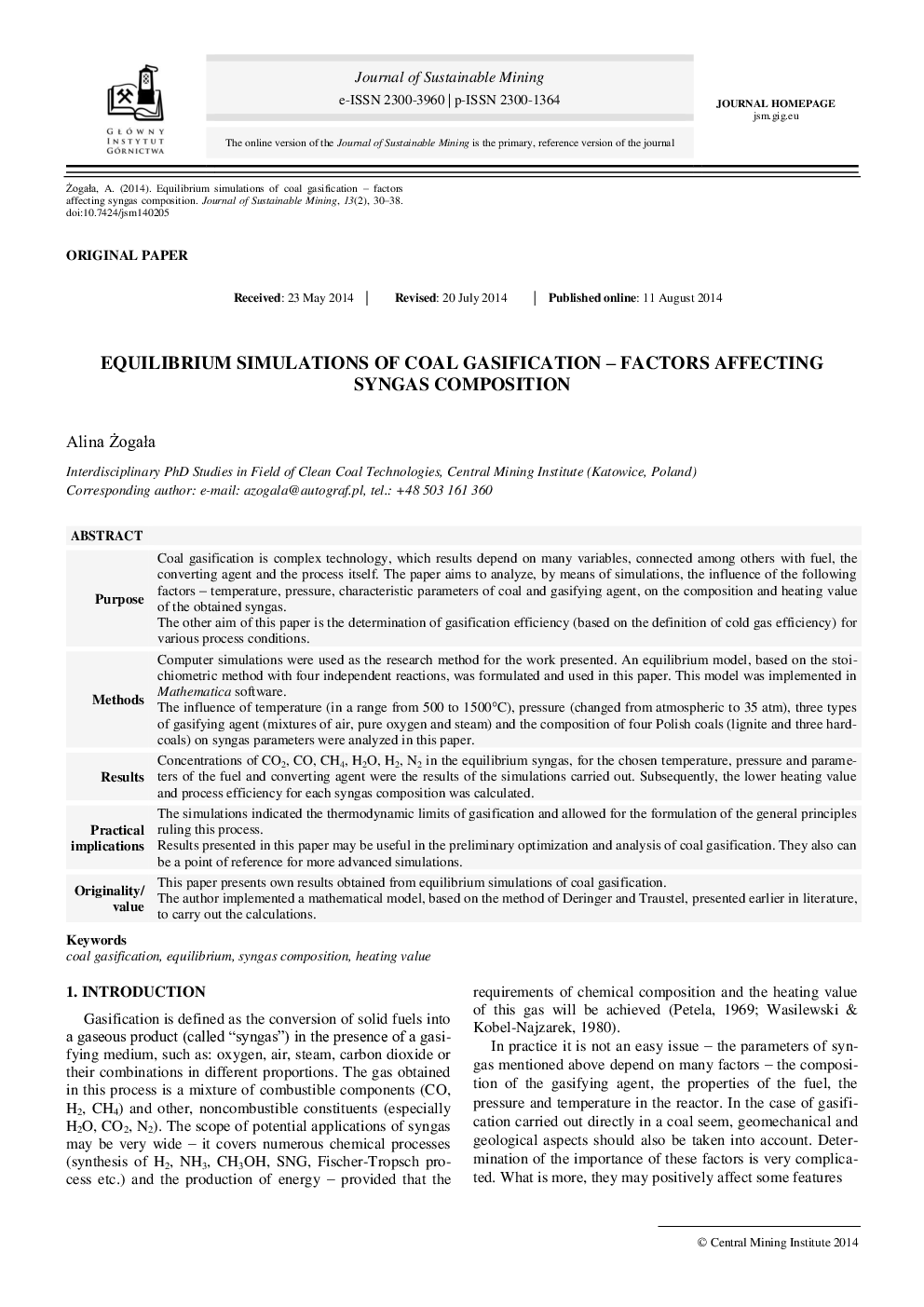| Article ID | Journal | Published Year | Pages | File Type |
|---|---|---|---|---|
| 1758415 | Journal of Sustainable Mining | 2014 | 9 Pages |
ABSTRACTPurposeCoal gasification is complex technology, which results depend on many variables, connected among others with fuel, the converting agent and the process itself. The paper aims to analyze, by means of simulations, the influence of the following factors – temperature, pressure, characteristic parameters of coal and gasifying agent, on the composition and heating value of the obtained syngas.The other aim of this paper is the determination of gasification efficiency (based on the definition of cold gas efficiency) for various process conditions.MethodsComputer simulations were used as the research method for the work presented. An equilibrium model, based on the stoichiometric method with four independent reactions, was formulated and used in this paper. This model was implemented in Mathematica software.The influence of temperature (in a range from 500 to 1500°C), pressure (changed from atmospheric to 35 atm), three types of gasifying agent (mixtures of air, pure oxygen and steam) and the composition of four Polish coals (lignite and three hard-coals) on syngas parameters were analyzed in this paper.ResultsConcentrations of CO2, CO, CH4, H2O, H2, N2 in the equilibrium syngas, for the chosen temperature, pressure and parameters of the fuel and converting agent were the results of the simulations carried out. Subsequently, the lower heating value and process efficiency for each syngas composition was calculated.Practical implications: The simulations indicated the thermodynamic limits of gasification and allowed for the formulation of the general principles ruling this process.Resultspresented in this paper may be useful in the preliminary optimization and analysis of coal gasification. They also can be a point of reference for more advanced simulations.Originality/valueThis paper presents own results obtained from equilibrium simulations of coal gasification.The author implemented a mathematical model, based on the method of Deringer and Traustel, presented earlier in literature, to carry out the calculations.
